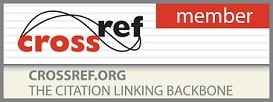Induced membrane technique for treatment of acute post-traumatic femoral bone loss
2016, Volume 2 Issue 4
Induced membrane technique for treatment of acute post-traumatic femoral bone loss
Author(s): Adel Mohammed Salama
Abstract: Background: The segmental bone loss resulted from osteomyelitis or after high energy trauma is one of the great ‎challenges facing trauma surgeons.
Patients and methods: twenty four patients 20 males and 4 ‎female with large bone defect resulted after posttraumatic bone loss with potentially infected ‎wound were treated by the two-stage induced membrane technique. The patients included in this ‎study had bone defect of mean (6 cm) – (range 4-8 cm) due to acute bone loss. The mean age of ‎the patients was 24 years ranged from (14 to 36). Clinically, the patients were examined for wound problem, pin tract infection (PTI). ‎Radiologically, the assessment of bone growth and consolidation on serial x-rays. The mean time ‎for removal of external fixator was 12 weeks (range: 9 -16 weeks) after complete healing of the ‎bone graft. Long leg cast was done after removal of external fixator for 6-10 weeks to protect the ‎bone from refracture.
Results: The mean follow up period was 24 months (range 18-36 months). There was significant relation ‎between the size of the defect and the time of healing as the bigger the defect, the longer the ‎time needed for healing. The average external fixation index in this study is 1.8 (range: 1.5 to 2 ‎months/cm). Radiologically, there was angular ‎deformity of 10°-15° in healed cases. The lost range of knee flexion ranged from 20–30° when ‎compared to the other side. There was no loss of hip range of motion in all patients. ‎
Conclusion: The induced membrane technique is a simple and valid technique for the reconstruction of ‎posttraumatic bone defects after debridement of bone fragments and lost bone.
Pages: 298-301 | 1716 Views 96 Downloads
How to cite this article:
Adel Mohammed Salama. Induced membrane technique for treatment of acute post-traumatic femoral bone loss. Int J Orthop Sci 2016;2(4):298-301. DOI: 10.22271/ortho.2016.v2.i4e.47






